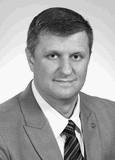Features of the stroke in the process of integrating physical and technical training of crawler swimmers at the stage of improving sportsmanship
Keywords:
integration, technical and physical training, crawler swimmers, stage of improving sportsmanship, training tools, stroke characteristics.Abstract
Objective of the study was to identify the features of changes in stroke characteristics in the process of integrating the technical and physical training of swimmers at the stage of improving sportsmanship.
Methods and structure of the study. The three-year experiment involved 45 swimmers of the stage of improving sportsmanship, who qualified as candidates for master of sports of Russia and made up the experimental (EG) and control groups (CG). The training programs in the experimental group included modified load options, specially selected exercises that simultaneously affected the parameters of physical and technical readiness, which are leading in the formation of maximum swimming speed. The training plans of the athletes in the control groups were carried out in accordance with the regulations of the Federal Standard of Sports Training for the sport – “swimming”. The work used methods of computer video analysis of swimmer movements, analysis of intra-cycle swimming speed, dynamic parameters of swimming technique, testing, and mathematical statistics.
Results and conclusions. Significant differences were revealed in 24 out of 30 parameters of stroke movements in athletes from the EG and CG, indicating pronounced positive changes in the stroke in athletes from the EG. At the same time, differences were established in the mechanism of formation of stroke power in the propulsive phases - pulling up and pushing off. The use of special exercises in training programs for swimmers at the stage of improving sportsmanship, aimed at developing the strength component of swimming technique in the context of integrating means of physical and technical training, leads to characteristic changes in the structure of the stroke. The identified differences in the indicators of strength, speed and power of the stroke in its propulsive phases among swimmers from the EG and CG ensure a significant increase in the maximum swimming speed in athletes of the first group compared to the second.
References
Arishin A.V., Pogrebnoy A.I. Obosnovaniye kontseptsii tekhniko-fizicheskoy podgotovki plovtsov v mnogoletnem trenirovochnom tsikle. Teoriya i praktika fizicheskoy kultury. 2022. No. 10. pp. 21-23.
Arishin A.V., Akhmetov S.M., Pogrebnoy A.V. Sopryazhennoye ispolzovaniye sredstv fizicheskoy i tekhnicheskoy podgotovki plovtsov vysokoy kvalifikatsii v bazovom mezotsikle. Teoriya i praktika fizicheskoy kultury. Krasnodar. 2020. No. 12. pp. 92-94.
Platonov V.N. Osnovy podgotovki sportsmenov v olimpiyskom sporte. Coach's handbook: 2 volumes. Moscow: Printleto publ., 2021. Vol. 1. 592 pp.
Caty V., Aujouannet Y., Hintzy F., Bonifazi M., Clarys J.P., Rouard A.H. Wrist stabilisation and forearm muscle coactivation during freestyle swimming. J Electromyogr Kinesiol. 2007. pp. 285-291.
Jaric S. Force-velocity relationship of muscles performing multi-joint maximum performance tasks. Int J Sports Med. 2015. pp. 699-704.
Leblanc H., Seifert L., Tourny-Chollet C., Chollet D. Velocity variations in breaststroke swimmers of different competitive levels. International Journal of Sports Medicine. 2007. pp. 140-147.
Ruiz-Navarro J.J., López-Belmonte Ó., Gay A., Cuenca-Fernández F., Arellano R. A new model of performance classification to standardize the research results in swimming. Eur. J. Sport Sci. 2022. pp. 1-11.


